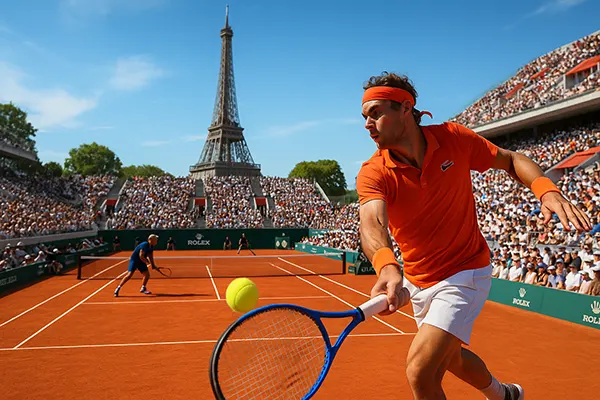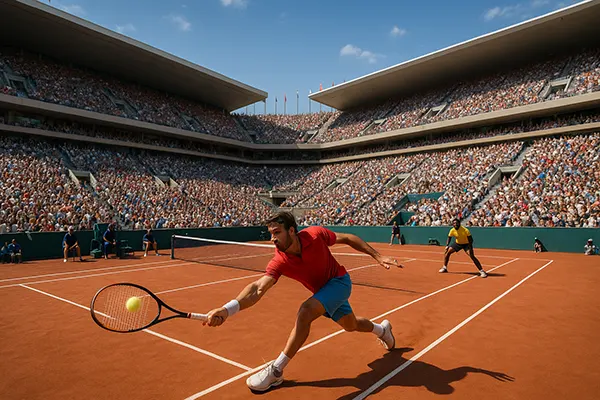
Heritage of Paris 2024: How the Olympic Tennis Tournament Changed the Game and Its Popularity
The Olympic Games in Paris 2024 marked a turning point for global tennis. The tournament not only delivered exceptional sporting drama but also introduced structural and cultural changes that influenced the way tennis is perceived and played in 2025. From innovative scheduling to broader audience engagement, the legacy of Paris continues to shape the sport both on and off the court.
Structural Changes Introduced in Paris 2024
One of the most significant adjustments in Paris was the revised match format. The International Tennis Federation (ITF) shortened men’s matches in early rounds to best-of-three sets, aligning them with women’s competitions. This decision enhanced equality and reduced physical strain, particularly beneficial for players involved in both singles and doubles.
Another notable innovation was the introduction of a 10-point tiebreak in deciding sets across all events. This rule brought consistency to match conclusions and avoided excessively long contests, ensuring more predictable schedules for players, broadcasters, and fans.
The tournament also implemented stricter shot clock rules, encouraging faster play and minimising downtime between points. This adjustment modernised the sport for younger audiences accustomed to quicker formats in other sports and esports.
Impact on Player Performance
The streamlined format reduced injury risks and allowed athletes to compete at higher intensity throughout the event. Players reported feeling fresher during later rounds, which improved match quality and kept top stars in contention until the finals. For example, Novak Djokovic and Iga Świątek both praised the changes for balancing fairness and physical demands.
Doubles specialists benefited as well, since shorter singles matches meant that top players were more willing to enter doubles draws, raising the level of competition. This elevated the prestige of doubles events, traditionally overshadowed by singles tournaments.
The introduction of uniform tiebreak rules added a new layer of strategy. Athletes had to adapt mentally, knowing that pressure situations were likely to arise more often, testing their focus and resilience in high-stakes moments.
Global Popularity Boost
The Olympic tennis event in Paris drew record-breaking television and streaming audiences. Broadcasters reported higher engagement rates compared to Tokyo 2020, thanks in part to prime-time scheduling in Europe and digital-first coverage tailored for younger fans. Social media highlights and real-time data visualisations allowed audiences to connect with matches in new ways.
Participation in grassroots tennis programmes surged after Paris. Federations in Europe, Asia, and Africa reported notable increases in junior registrations, particularly among girls. This outcome aligned with the International Olympic Committee’s broader mission of gender equality and inclusivity in sport.
Additionally, tennis enjoyed greater integration with local culture. Paris showcased matches at the historic Roland Garros, but also hosted outreach events in urban settings, where temporary courts introduced the sport to new communities, reinforcing its image as accessible and modern.
Cultural and Social Influence
The visibility of tennis stars during the Games reinforced their role as ambassadors for health, equality, and sustainability. Initiatives such as eco-friendly tournament operations and community programmes highlighted how tennis can contribute beyond the sporting arena.
Female athletes in particular gained increased recognition, with Paris providing equal prize money and identical conditions for men’s and women’s competitions. This sent a strong message of parity that resonated worldwide, inspiring new generations of players.
Moreover, the blend of tradition and modernity at Paris 2024 set a precedent for future tournaments. By balancing respect for the sport’s heritage with progressive changes, tennis positioned itself as both timeless and adaptable.

Future Outlook of Olympic Tennis
The structural reforms and popularity boost seen in Paris are expected to continue influencing tennis at subsequent Olympic Games and beyond. Organisers of Los Angeles 2028 have already indicated that they will retain the revised formats, while exploring additional innovations in technology and fan engagement.
Sporting federations worldwide are now using Paris 2024 as a benchmark for how to modernise without losing authenticity. National associations are experimenting with shorter match formats in domestic competitions to attract younger audiences and keep television broadcasters invested.
Most importantly, the Paris Games demonstrated that tennis, when presented through innovative yet respectful adjustments, can expand its global reach without alienating its traditional fanbase. This balance will be essential as the sport seeks to remain relevant in an increasingly competitive entertainment landscape.
Long-Term Legacy
The legacy of Paris 2024 lies not only in medals and records but also in the sport’s renewed identity. Tennis emerged as a more inclusive, efficient, and audience-friendly discipline, showcasing how the Olympic stage can act as a catalyst for meaningful evolution.
Players now carry forward the lessons of adaptation and resilience, while fans benefit from more accessible and dynamic experiences. This synergy between athletes and audiences reflects a new era for tennis defined by engagement and sustainability.
Looking ahead, Paris 2024 will be remembered as the tournament that redefined tennis for the modern age—where fairness, innovation, and global appeal converged to shape the future of the game.
